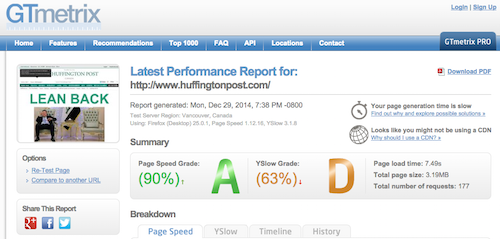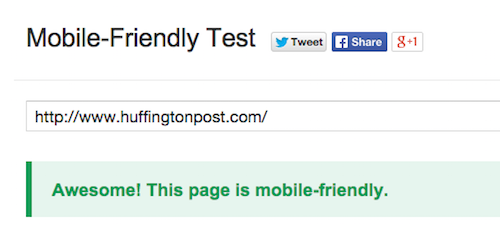A website is often one of the most valuable assets a business owns. If you plan on improving its performance in 2015 then you will want to make sure that you start the year off with a solid base. I put together a simple five-step SEO tune up that you can perform right now to make sure that you have a solid starting point for your 2015 SEO strategy.
1. Install Google Analytics & Set Up Google Webmaster Tools
There are two Google services that are absolutely free and provide priceless insight and data that can be used to grow and improve your organic search visibility. Google Analytics gives you data about your website visitors that can help you identify the pages of your website that are the most engaging and what your most valuable (and profitable) referral sources are.
Setting up conversion goals within your Analytics account can help you mold your SEO strategy around the traffic that produces the most leads, sales and revenue for your business. If you are new to Analytics check out the Google Analytics Blog for helpful articles and to access the learning center.
Google Webmaster Tools is very simple to set up and it offers valuable data that can be used to increase search visibility. You can see how many pages of your website are indexed in the search results, what search terms brought traffic and how many impressions each search term generated. For example, if you notice a lot of impressions for a specific term and a very low click through rate you would want to change your page description in an attempt to attract a higher click through rate. If there are problems with your website they will be listed here as well, making this a "must-have" tool for all website owners.
2. Check Your Website Performance
If your website loads slowly it not only has a negative impact on your SEO but it also provides your visitors with a horrible user experience. If someone lands on your website and the pages load slowly they are going to leave right away and probably never return. Users demand fast website speed so make sure that your website is optimized to load quickly.
You could have a lot of organic search visibility and attract a lot of traffic but if your site loads slowly the traffic isn't going to stick around. There are two very good tests you can run online right now to test your website speed. Google PageSpeed Insights and GTmetrix will return a score and also give you suggestions to improve your website performance.
3. Check Your On-Page Optimization
So many businesses waste time as well as money on SEO for websites that don't have their on-page optimization done correctly. You could spend several thousands of dollars on link building and content marketing each month but if the on-page optimization is not up to par then the website will never reach its full potential in the search results.
Spend some time checking the on-page optimization for each page of your website. Use my company's on-page optimization guide to help you properly optimize each page. Make sure you do this before you spend a single dollar on SEO.
4. Perform a Mobile-Friendly Test
The percentage of mobile traffic continues to rise and every year we hear that "this is the year for mobile traffic" -- well guess what? Mobile traffic is already here and it isn't going anywhere. You must have a mobile friendly website these days. A large percentage of your traffic is going to come from mobile devices so make sure that your website is considered mobile friendly by the search engines. Take a moment and run your website through Google's mobile-friendly test.
Websites that are deemed to provide a good mobile viewing experience will see a "Mobile-friendly" notation next to their listing in the mobile search results.
5. Audit Your Local Listing Profiles
Local listings are a key part of local SEO so it is important that your listings are not only complete, but also consistent across the board. Your NAP (business name, address and phone number) should be identical for every listing. If you want to quickly identify missing listings, incomplete listings or duplicate listings Moz local is a very handy tool.
Now is the perfect time to audit your local listings and make corrections before the start of the upcoming year and before you sink more money into your local SEO campaign. Take the time to fully complete listings, correct any inconsistent information and delete duplicate listings.
Want more free online marketing tips? Make sure you sign up for the Market Domination Media weekly newsletter. Click here to instantly download a free copy of "The Complete A-Z Online Marketing Strategy Guide" and you will also automatically receive free online marketing tips in your inbox every week.



